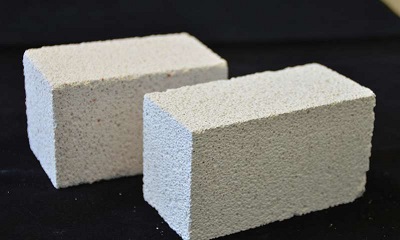 Friday, July 26, 2024
Friday, July 26, 2024  Friday, July 26, 2024
Friday, July 26, 2024 
Got news? Next submission deadline is Friday at 5:00 p.m.
Click here to submit YOUR news

The construction industry is one of the most resource-intensive sectors of the German economy. The nation’s buildings constitute a vast store of raw materials, harboring some 100 billion metric tons of materials that could be recovered and returned to the material cycle at the end of their service life. Four Fraunhofer Institutes have joined forces in the BauCycle project to kick-start recycling of sand and gravel fine particle fractions that cannot be reclaimed today for reuse in further construction projects. The research team will present the results of their work at the 2019 BAU trade fair in Munich from January 14 to 19. The showcase at booth 528 in hall C2 will feature aerated concrete blocks made of recycled rubble, acoustical building materials, and components made of mineral granulates.
After a day at the beach, sand would hardly seem to be in short supply. Appearances deceive, for this valuable commodity is growing scarce in many countries, one reason being the global construction boom. It takes mountains of concrete, which consists mostly of sand and gravel, to build hotels, shopping centers and industrial parks. Dubai, for example, had to import Australian sand to erect the Burj Khalifa skyscraper; its own desert sand was ill-suited to this purpose. Even Germany’s deposits of gravel and sand are dwindling, as a recent report by the Federal Institute for Geosciences and Natural Resources noted.
Worldwide, some 40 billion metric tons of sand and gravel are used up every year. During the same time span in Germany, demolished buildings and infrastructure leave behind around five million metric tons of fine-grained building rubble. To date, it has ended up in landfills or was used in road construction; upcycling was unheard of. This prompted the Fraunhofer Institutes for Building Physics IBP, for Material Flow and Logistics IML, for Environmental, Safety and Energy Technology UMSICHT, and for Optronics, Systems Technology and Image Analysis IOSB (see box) to launch a project called BauCycle to recycle construction waste. Their aim is to transform this mix of minerals into a sustainable resource and demonstrate potential applications in construction. One specific target is to recycle particles of mineral construction waste measuring less than two millimeters in diameter. To do so, the researchers are developing innovative sorting processes and high-quality building materials. And to cover the entire value chain, they also plan to set up a dynamic market platform where raw materials are traded as commodities.
“Building sand is not superabundant; in Europe, for example, sand is in short supply in Sweden and France. The conventional method of treating rubble is to crush it. Components of less than two millimeters are sieved out and end up in landfill. If this fine-grained building rubble – which consists mainly of sand-lime bricks, bricks, concrete and small amounts of gypsum – were to be recycled, this could redress the sand shortage over the long term,” says Fraunhofer IBP scientist Dr. Volker Thome, the project’s manager.
Watch our video and learn more about the benefits of joining Construction Links Network – the peer-to-peer network sharing platform for the construction, building and design community.
Press Releases | Project Updates | New Appointments | Awards & Milestones | Company News | New Products/Services | Brochures | Videos | Infographics | Blog Sharing | Events and More